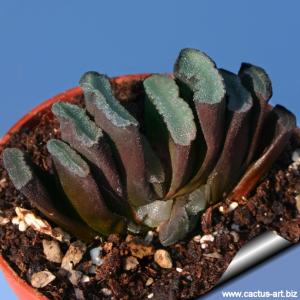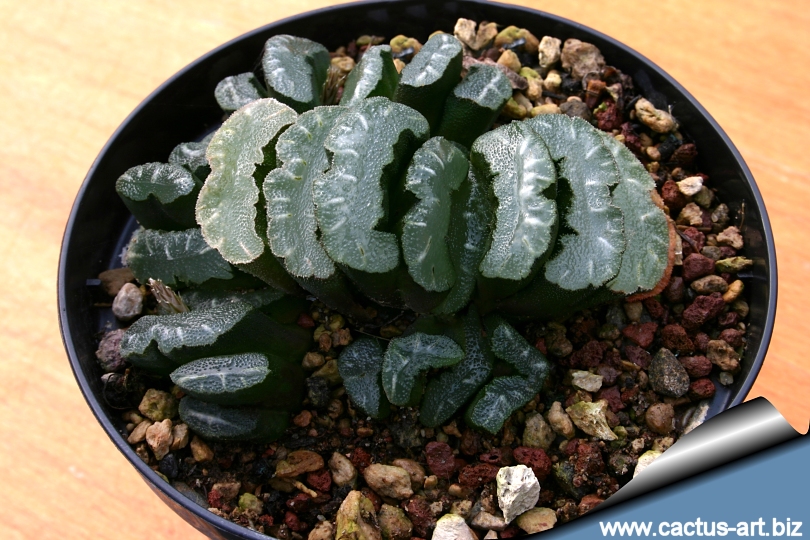-
x
Descrizione
Questa specie staordinaria, sebbene adesso sia relativamente facile da trovare, continua ad ispirare trepidazione e ammirazione per via delle sue foglie troncate. Pianta unica e differente per ogni collezzione. Family: Asphodelaceae (Aloacee - Liliaceae) Scientific name: Haworthia truncata var. truncata Schoenland Distribution: South Africa (Western Cape: Little Karoo) in Oudtshoorn area (in a number of locality, Volmoed, Vanwykskraal, Dysselsdorp etc.) Habitat: They grow in the shade of bushes and occasionally in open areas. They grow underground with only the apex of the leaves rising above the soil surface so that they are difficult to find. This is an excellent protection against herbivores . This very singular plant has contractile leaves that will pull the plant into the ground during times of drought, leaving only the windowed tops exposed. Etymology: The genus "Haworthia" is named after the British botanist Adrian Hardy Haworth (1767–1833)
| |
| Description: This desirable species, despite the fact that actually is common in cultivation, still inspires trepidation and admiration by way of its unusual truncate leaf tips. It is a superb plant, unique, distinctive and very different for any collection | |
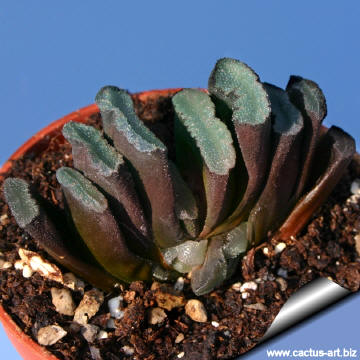 | 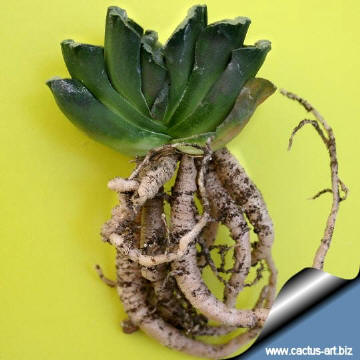 |
| Fenestrate leaves | Contractile roots |
| Fenestrate leaves: This plant is a choice example of the window-leaf ( fenestrate leaf) adaptation found in many Haworthias, Mesembreanthemums and Peperomias, the translucent 'glassy' windowed apices allow light into the internal plant body rich in chlorophyll-bearing layers of cells, thereby providing a much larger assimilation area. Contractile roots: Contractile roots pull the this plant deeper into the soil to protect it from sun and heat during the dry season. Contractile roots are found in many plants species mainly at the base of an underground organ (bulb, corm, succulent rosette, etc.) | |
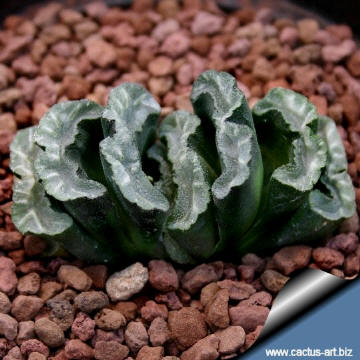 | 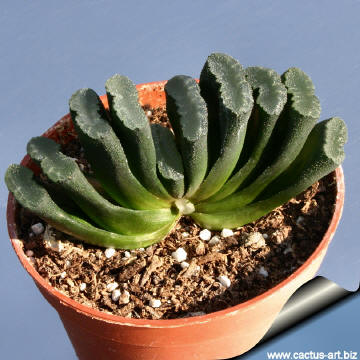 |
| Notes: This species has been the subject of passionate work of breeding and selection by the Japanese, and a number of wonderful cultivars with white lacy patterns on green-grey windowed tips have been developed and propagated, and some specimens have a very unique leaf shape. Cultivation: Not difficult to cultivate, though it is not fast growing and takes several years to form good looking heads, Must be repotted frequently, because every year a part of their roots die and then rots in the pot. | |

